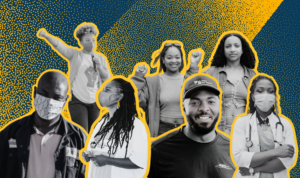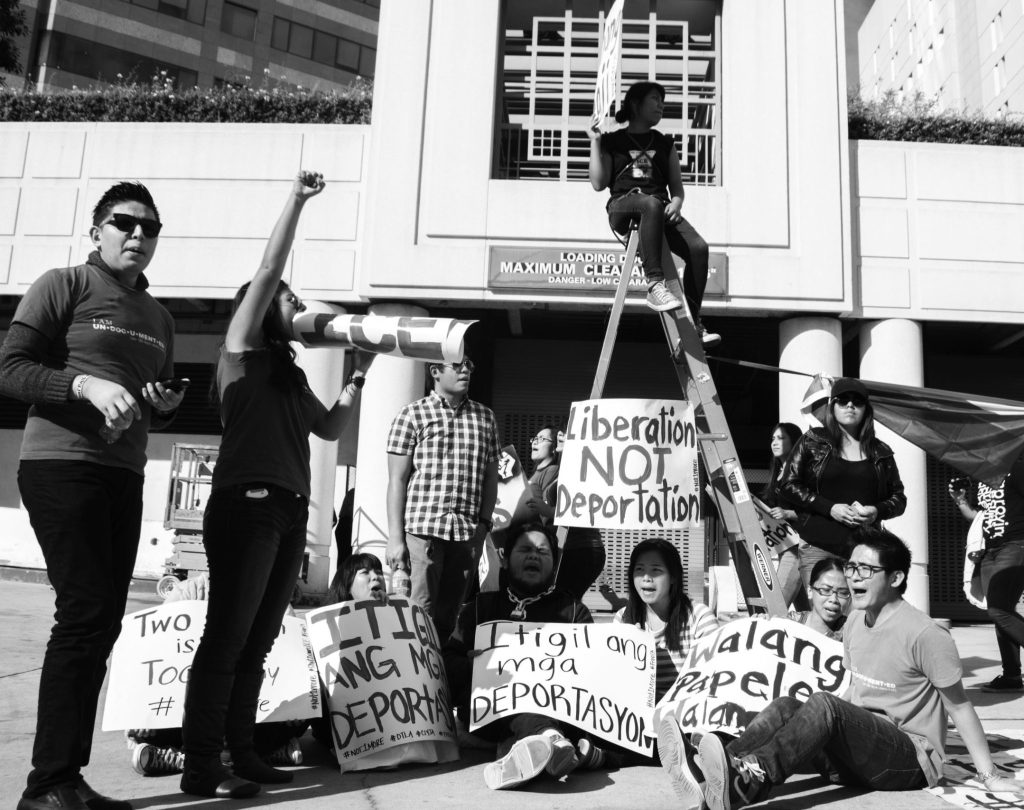LA fast-food sector leads to disproportionate COVID-19 risks and high public costs
LOS ANGELES – A report published today finds that working conditions in the Los Angeles fast-food industry lead to an increased risk of COVID-19 transmission in communities of color, and $1.2 billion in public costs as a result of low wages that have plagued the industry for years. Fast-food is an integral part of the food sector in Los Angeles, comprising nearly 150,000 restaurant workers, the vast majority of whom are women and workers of color.
The report, The Fast-Food Industry and COVID-19 in Los Angeles, is a collaboration between the UCLA Labor Center, UC Berkeley Labor Center, UCLA Labor Occupational Health and Safety Program, and UC Berkeley Labor Occupational Health Program.
According to the study, fast-food worksites are particularly vulnerable to COVID-19 transmission. One-third of fast-food worksites have twenty or more employees, suggesting shared equipment, work spaces, bathrooms, and break areas.
“Fast food restaurants have workspaces that are in close proximity coupled with high customer volume, increasing the risk of exposure for this workforce. In fact, one study found that cooks have the highest increased mortality of any job during the pandemic,” said Saba Waheed, report author and Research Director at the UCLA Labor Center. “And to top it off, COVID-19 exacerbates already existing workplace issues including sexual harassment.”
Black, Latinx, and Asian communities have disproportionately higher rates of infection, hospitalization, and death compared to their White counterparts. Report authors note that the interplay between essential workers, household size, race, and income is nowhere more obvious than in Los Angeles, where nine in ten fast-food workers are workers of color, and nearly three-quarters are Latinx.
“It’s important to remember that COVID-19 transmission from fast-food worksites can then impact households and surrounding communities. The majority of fast-food workers live near their workplaces and are more likely to use public transportation. Most live with four or more people, which makes social distancing difficult or impossible, and about a third live with people older than 55. This means that a worksite outbreak raises the risk for community spread in dense working class areas of Los Angeles,” said Tia Koonse, report author and Legal and Policy Research Manager at the UCLA Labor Center.
Even prior to the pandemic, the fast-food industry was characterized by difficult work conditions and low pay. The report finds that two-thirds of the families of fast-food workers in LA County are enrolled in a safety net program at a cost of $1.2 billion to the public.
“The wages earned by fast-food workers make up 40% of their families’ total incomes. Low pay means that workers need public safety net programs to meet their families’ basic needs,” said Ken Jacobs, report author and Chair of the UC Berkeley Labor Center. “Most earn at or near the minimum wage, and they are twice as likely as other workers to fall below the federal poverty line.”
“What is clear from this report is the significant labor issues fast food workers face – related to their safety, harassment, and wage theft,” said Los Angeles County Board of Supervisors Chair Hilda L. Solis, Supervisor to the First District. “Unfortunately, this particularly impacts our Latinx and Black communities which have also been ravaged by COVID-19. These concerns, which this study brings to light, demonstrate the work we have ahead of us.”
This report is based on demographic and government data and will be followed by a second report on the working conditions and experiences of fast-food workers in summer 2021.
Download the report: bit.ly/fastfoodcovid19
Watch our press briefing: bit.ly/fastfoodpresser
**Please contact Veena Hampapur to schedule interviews.**
# # #


